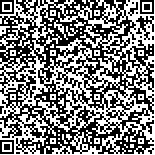| 引用本文: | 刘曼,付波霖,何宏昌,解淑毓,仇继圣,孙习东,龚烨云,劳植楠,左萍萍.基于多时相主被动遥感的漓江水面监测与水质参数反演(2016—2020年).湖泊科学,2021,33(3):687-705. DOI:10.18307/2021.0306 |
| Liu Man,Fu Bolin,He Hongchang,Xie Shuyu,Qiu Jisheng,Sun Xidong,Gong Yeyun,Lao Zhinan,Zuo Pingping.Water surface monitoring and water quality parameters inversion of Lijiang River based on multi-temporal active and passive remote sensing, 2016-2020. J. Lake Sci.2021,33(3):687-705. DOI:10.18307/2021.0306 |
|
| |
|
|
| 本文已被:浏览 5809次 下载 4786次 |

码上扫一扫! |
|
|
| 基于多时相主被动遥感的漓江水面监测与水质参数反演(2016—2020年) |
|
刘曼, 付波霖, 何宏昌, 解淑毓, 仇继圣, 孙习东, 龚烨云, 劳植楠, 左萍萍
|
|
桂林理工大学测绘地理信息学院, 桂林 541006
|
|
| 摘要: |
| 以漓江流域为研究区域,以2016—2020年Landsat 8 OLI、GF-1、Sentinel-2A及Sentinel-1A逐月影像为数据源,选用归一化水指数(NDWI)、改进型归一化水指数(MNDWI)、增强型水体指数(EWI)、归一化差值池指数(NDPI)、后向散射系数(S)与主被动遥感加权指数(JQ)提取漓江水体信息,采用二类水体区域性近岸海域水色算法(C2RCC)、最大叶绿素指数(MCI)、双波段比值法(Double R)及叶绿素反射峰强度(ρchl)4种方式,反演漓江水体叶绿素a(Chl.a)与总悬浮物质(TSM)浓度.将漓江划分为278个基本评价单元,利用水面变化区域差异值(WDr)、河岸线发育系数(SDI)与水体信息变化动态度(K)等指标定量分析漓江上、中、下游枯水期和汛期的水文和水质信息的年内时空动态变化,得出以下结论:(1)主被动遥感加权指数JQ与NDPI指数的提取效果优于NDWI、MNDWI、EWI指数与后向散射系数,但与JQ指数相比,NDPI指数提取精度更高、可信度更强.(2)基于C2RCC算法反演的Chl.a浓度的均方根误差(RMSE)处于0.18~7.88 mg/m3之间,TSM浓度的RMSE为0.17~12.55 g/m3,可较好地反映漓江水质参数变化情况.(3)基本评价单元的划分可清楚地分析出上、中、下游地区水域水面宽度、水域面积、Chl.a与TSM浓度的连续变化情况,实测数据则依靠站点监测,所得结果较分散,无法进行连续性分析.(4)漓江5—10月降水较多、水体流动性强,大部分地区平均水面宽度在100~250 m范围内,水体富营养化程度低,水质较好,但2月水质最差,水体富营养化程度较高地区主要集中于上、中游的兴安县、灵川县等城镇居民区以及下游旅游开发区较多的兴坪镇. |
| 关键词: 漓江流域 主被动遥感加权水体指数 基本评价单元 叶绿素a和悬浮物质浓度反演 时空动态分析 |
| DOI:10.18307/2021.0306 |
| 分类号: |
| 基金项目:国家自然科学基金项目(41801071)、广西自然科学基金项目(2018GXNSFBA281015)、广西科技计划项目(桂科AD20159037)、桂林理工大学科研启动基金资助项目(GUTQDJJ2017096)和广西八桂学者团队项目联合资助. |
|
| Water surface monitoring and water quality parameters inversion of Lijiang River based on multi-temporal active and passive remote sensing, 2016-2020 |
|
Liu Man, Fu Bolin, He Hongchang, Xie Shuyu, Qiu Jisheng, Sun Xidong, Gong Yeyun, Lao Zhinan, Zuo Pingping
|
|
College of Geomatics and Geoinformation, Guilin University of Technology, Guilin 541006, P. R. China
|
| Abstract: |
| Lijiang River Basin is used as the research area, and Landsat 8 OLI, GF-1, Sentinel-2A, and Sentinel-1A monthly images of 2016-2020 are used as data sources. The normalized water index (NDWI), modified normalized water index (MNDWI), enhanced water index (EWI), normalized difference pond index (NDPI), backscatter coefficient (S) and weighted index of active and passive remote sensing (JQ) are used to extract the water information of the Lijiang River. The case 2 regional coast color (C2RCC), maximum chlorophyll index (MCI), two band ratio method (Double R) and chlorophyll reflection peak intensity (ρchl) are used to retrieve the concentration of chlorophyll-a (Chl.a) and total suspended matter (TSM) concentrations in Lijiang River. The Lijiang River is divided into 278 basic evaluation units, and the spatial-temporal dynamic changes of hydrological and water quality information in the upper, middle, and lower reaches in dry and flood seasons of Lijiang River are quantitatively analyzed by difference value of water surface variation (WDr), shoreline development index (SDI) and dynamic degree of water information change (K). The following conclusions are drawn: (1) Compared with NDWI, MNDWI, EWI, and backscatter coefficient, the extraction effect of JQ and NDPI are better. Compared with JQ, NDPI has higher precision and credibility. (2) RMSE of Chl.a based on the inversion of C2RCC algorithm is 0.18-7.88 mg/m3, RMSE of TSM is 0.17-12.55 g/m3, and it can better reflect the changing trend of Chl.a. (3) The division of the basic evaluation unit can clearly analyze the continuous changes of the width, area, Chl.a and TSM of the upstream, middle and downstream areas. The measured data rely on the monitoring of the stations, and the results are scattered and can't be used for continuity analysis. (4) The Lijiang River has more precipitation and strong water mobility from May to October. The average water surface width of most areas is within 100-250 m. However, the water nutrient is low and the water quality is good. The water quality is the worst in February. The areas with high eutrophication are mainly concentrated in Xing'an County, Lingchuan County and other urban residential areas in the upper and middle reaches, and Xingping town with more tourism development zones downstream. |
| Key words: Lijiang River Basin active and passive remote sensing weighted water index basic evaluation unit chlorophyll-a and total suspended matter concentrations inversion spatiotemporal dynamic analysis |
|
|
|
|